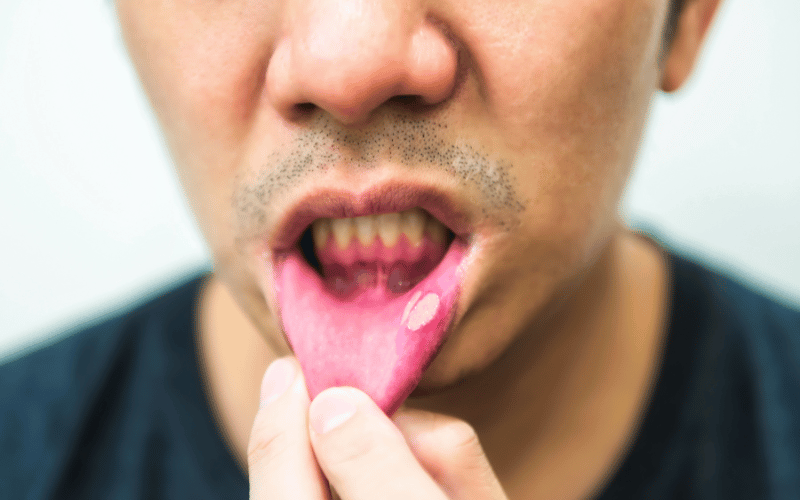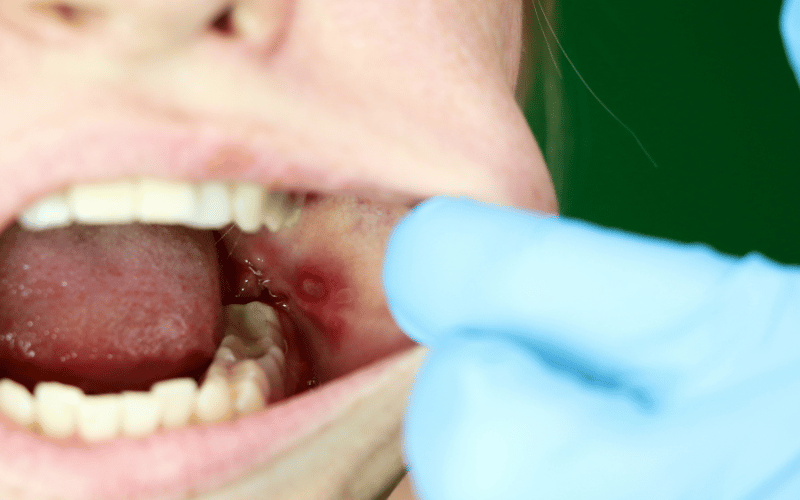Introduction: The Unseen Pain of Mouth Ulcers
Mouth ulcers, colloquially known as canker sores, might seem like a minor inconvenience to some. Still, to anyone who has experienced them, they’re much more than that. They’re a genuine source of discomfort, sometimes pain, and they can be an alarm bell for other health issues. Now, think about the times you’ve bitten the inside of your cheek or had a little cut inside your mouth. It’s uncomfortable, isn’t it? Now imagine that discomfort magnifying several times, and sticking around for weeks. That’s the reality of a mouth ulcer.

For those unacquainted with them, mouth ulcers are sores that form inside the mouth and result in pain and discomfort, especially when eating or drinking. They might appear trivial, but they can hamper one’s ability to enjoy meals, speak, or even just exist without constant discomfort. What causes them? A variety of factors. Sometimes it’s accidental, like biting the inside of one’s cheek. Sometimes it’s a reaction to certain foods or a sign of an underlying health condition. It varies.
Yet, the real issue isn’t just the ulcer itself. It’s the fact that many people don’t know the symptoms, and thus, don’t treat them timely or effectively. Understanding these symptoms isn’t about overreacting to a small health issue; it’s about being informed. Because being informed is the first step towards effective management, treatment, and ultimately, relief.
Now, let’s delve into the ten primary symptoms of mouth ulcers. By the end of this article, you’ll be equipped with the knowledge to identify and, hopefully, seek the necessary remedies for these pesky sores.
Symptom 1: Painful Sores Inside the Mouth

The emergence of painful sores within the confines of the mouth is one of the most prominent signs of mouth ulcers. These aren’t your run-of-the-mill mouth injuries; they are distinct and persistent. The pain is often sharp and lingers, affecting one’s daily life and routines. Imagine a situation where every time you attempt to relish a bite of your favorite meal, there’s a searing pain preventing you from enjoying it.
These sores often select their favorite spots: the tongue, the inner linings of the cheeks, the gums, and sometimes the soft palate. Their unpredictable positioning makes them even more challenging to deal with. While a sore on the tongue might hinder speech, one near the gums can make chewing an ordeal.
Over time, without proper care, these sores can become more than just temporary inconveniences. Their persistence can lead to a reluctance to eat, which, in turn, can have broader health implications. People might resort to avoiding certain foods or even not eating adequately due to the pain.
It’s also worth noting that the psychological impact of these sores can be significant. The constant pain and discomfort can lead to irritability, mood swings, and in some extreme cases, even depression. Hence, while it might start as a mere physical ailment, its repercussions can be holistic. (1)